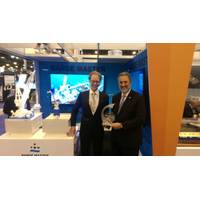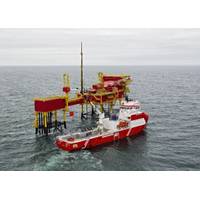Barge Master Wins Innovation Award at OTC

The Barge Master T40 motion compensated knuckle boom crane has been recognized for technological innovation, winning the Spotlight on New Technology Small Business Award at this year’s Offshore Technology Conference (OTC) in Houston. Barge Master develops motion compensation systems for the maritime industry that compensate vessel motions, creating a platform that is not moving with respect to the stationary fixed world. The systems are developed to increase the safety and workability of offshore lifting operations. The Barge Master T40 system compensates the roll, pitch and heave motions of a knuckle boom crane.
ABS: New Guidance for Certifying Lifting Appliances
Updated Guide includes latest industry standards. [PRESS RELEASE] (Houston) ABS has published a new edition of the ABS Guide for Certification of Lifting Appliances that includes construction and operation of modern lifting appliances. The revised ABS Lifting Appliance Guide provides the marine and offshore industry with a clear and precise set of requirements that fully address the existing and new technologies. The input from industry experts, gathered over a two-year period, is reflected in the Guide's more precise requirements for crane machinery; electrical and control systems; structure, material, fabrication, nondestructive evaluation and testing.
Motion Compensation Crane Delivered

Barge Master has delivered its first Barge Master T40 (BM-T40) motion compensated knuckle boom crane, the company announced. The BM-T40, installed on Wagenborg’s ‘Walk to Work’ vessel the Kroonborg, compensates for sea induced vessel motions in roll, pitch and heave directions at the base of the crane, up to three meters significant wave height. The BM-T40 is designed for offshore support vessels that are used to transfer small loads and personnel to (unmanned) offshore oil and gas platforms or wind turbines. The BM-T40 features a small footprint…
New DNV GL Recommended Subsea Lifting Standard

The completion of a joint industry project (JIP) to improve existing standards and regulations around subsea lifting operations has resulted in a new recommended practice (RP). The recommended practice developed by DNV GL, the leading technical adviser to the oil & gas industry, provides guidance on the proper design and correct operation, as well as regular inspection and maintenance, of subsea cranes and lifting appliances. The aim is to reduce the overall risk and safeguard personnel during lifting operations and to improve the integrity and efficiency of equipment throughout its lifetime.
